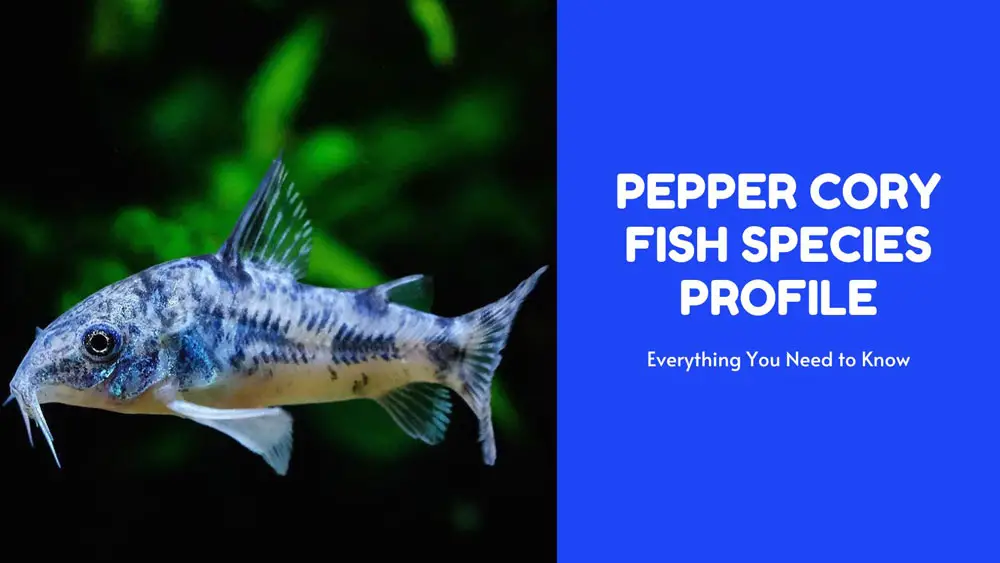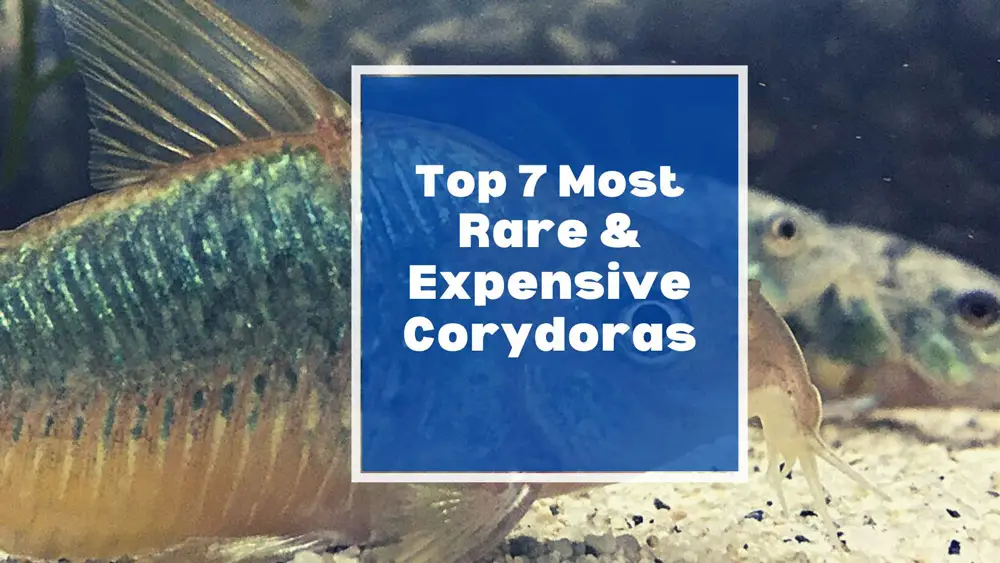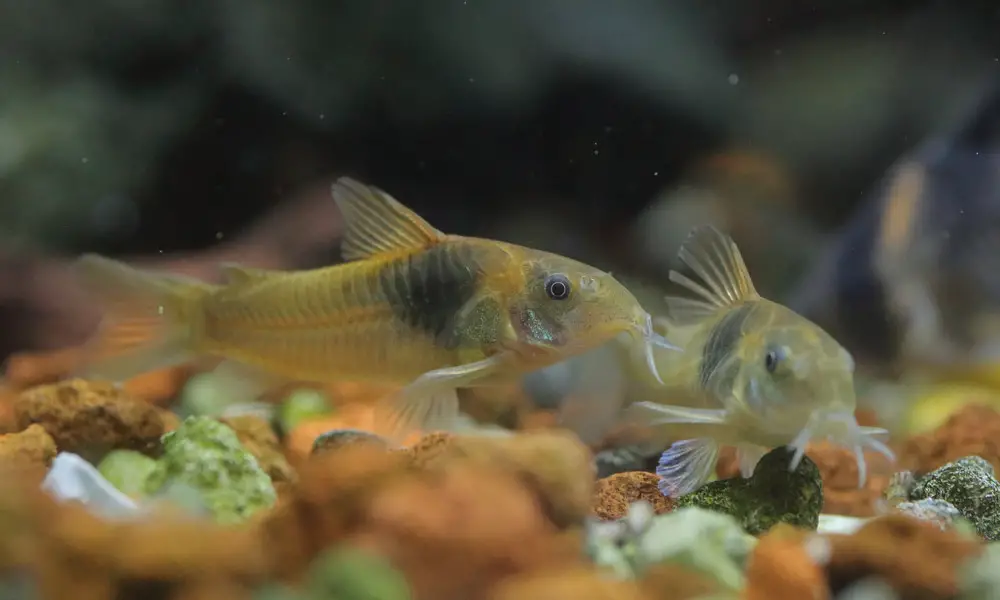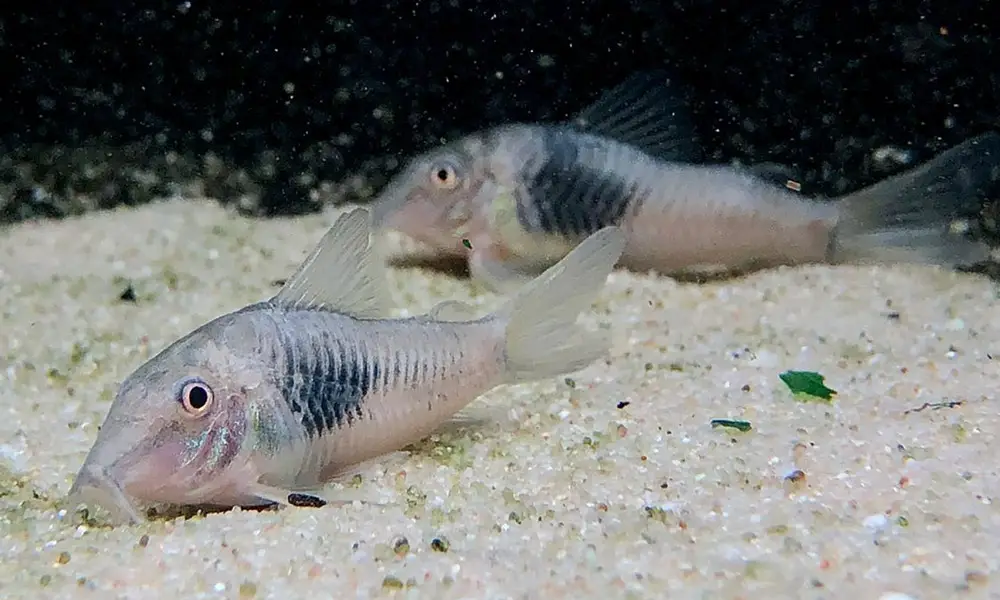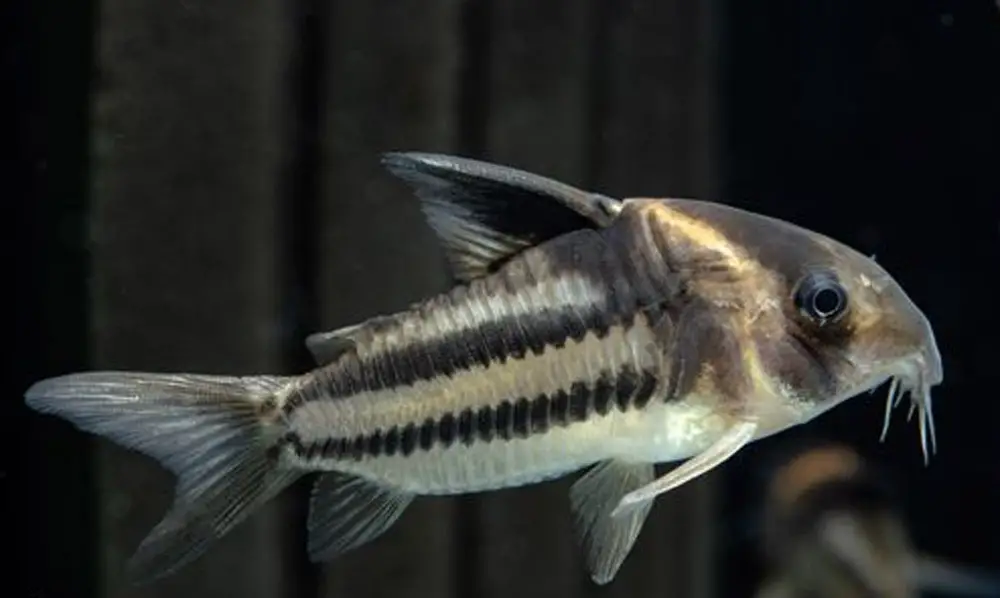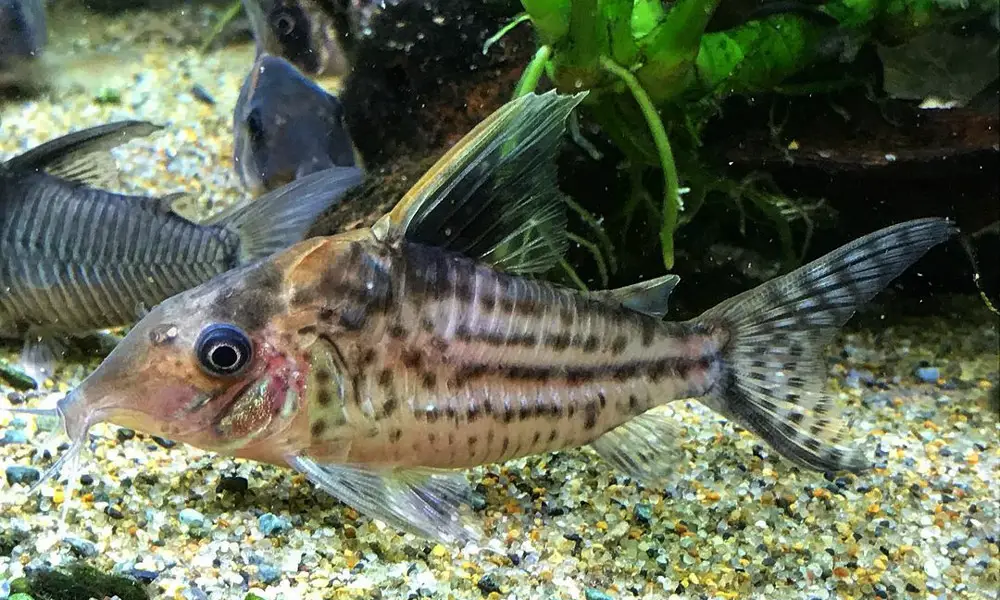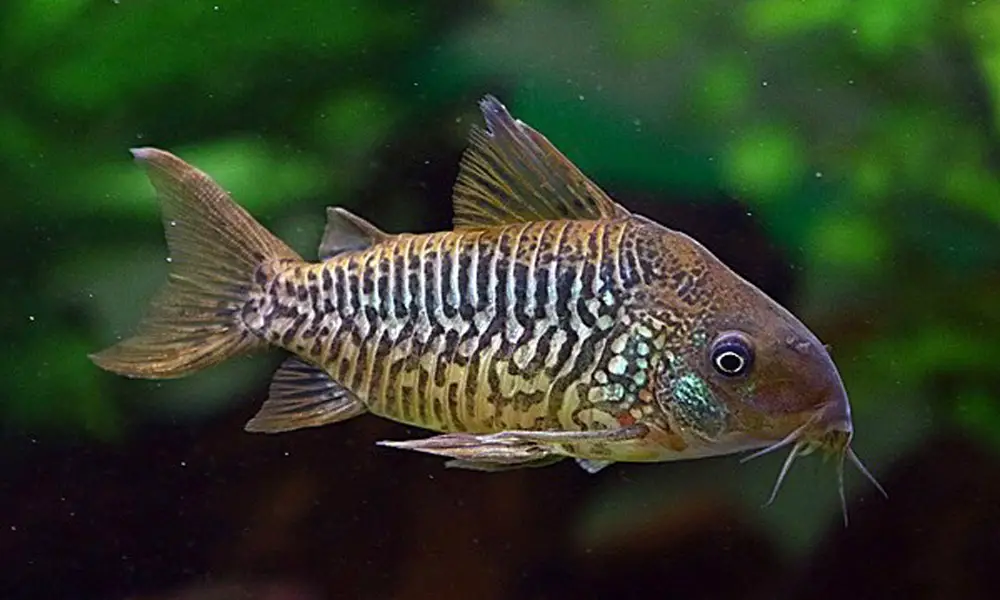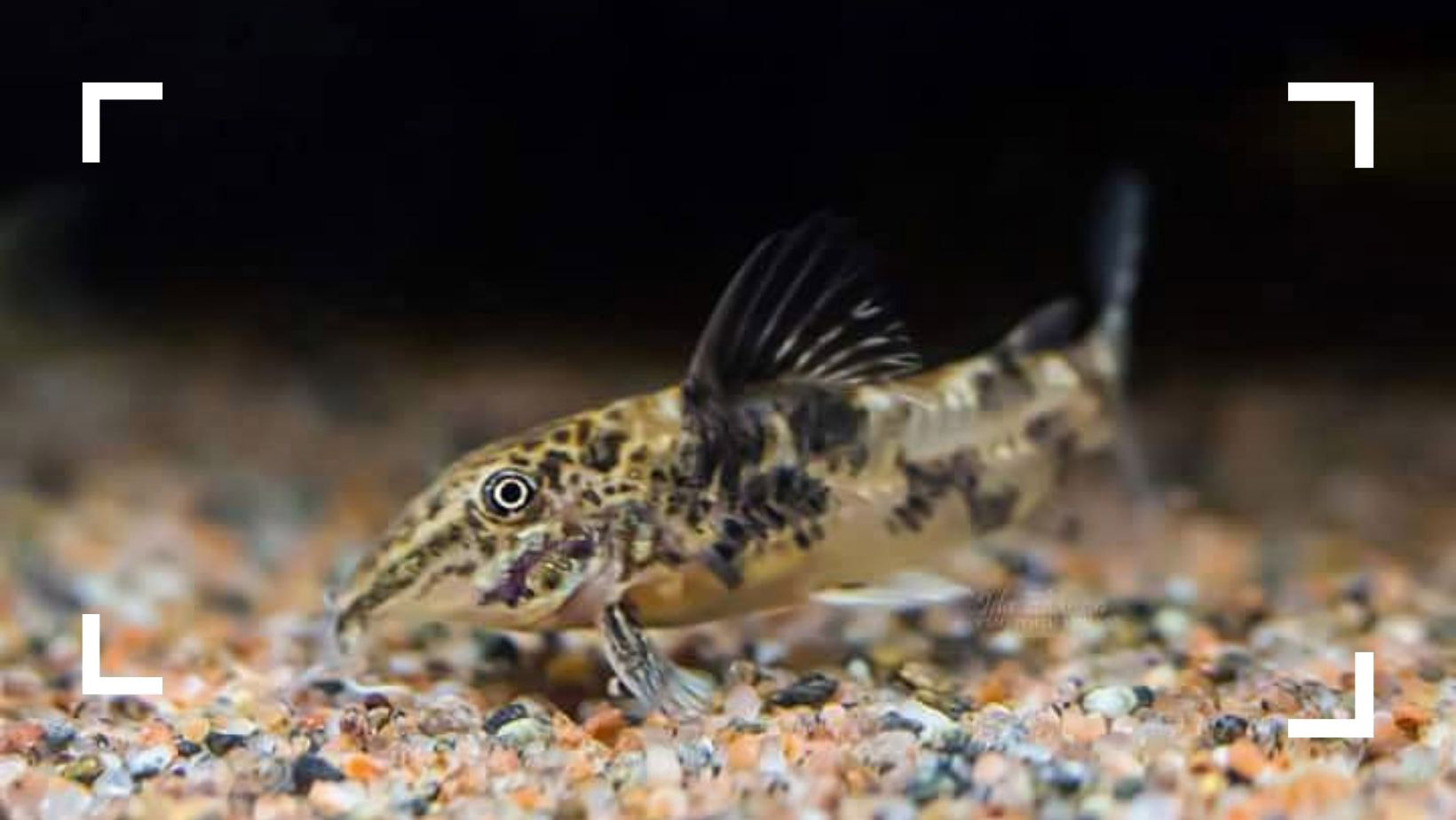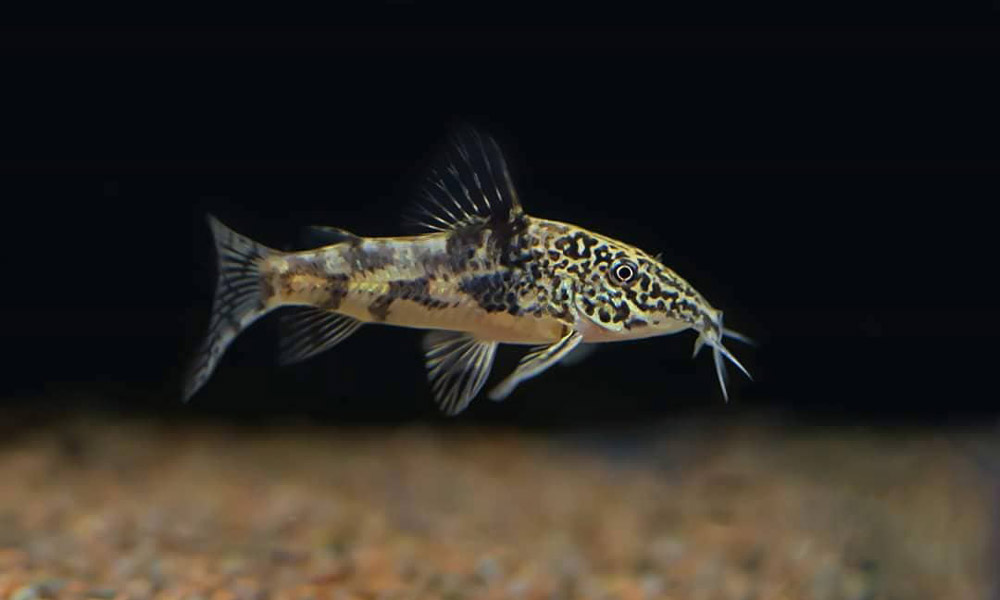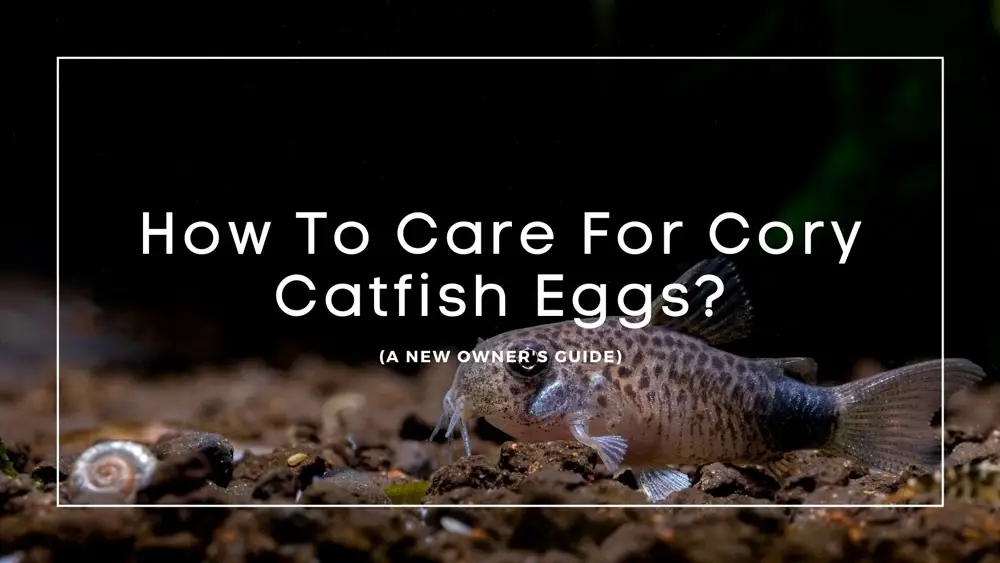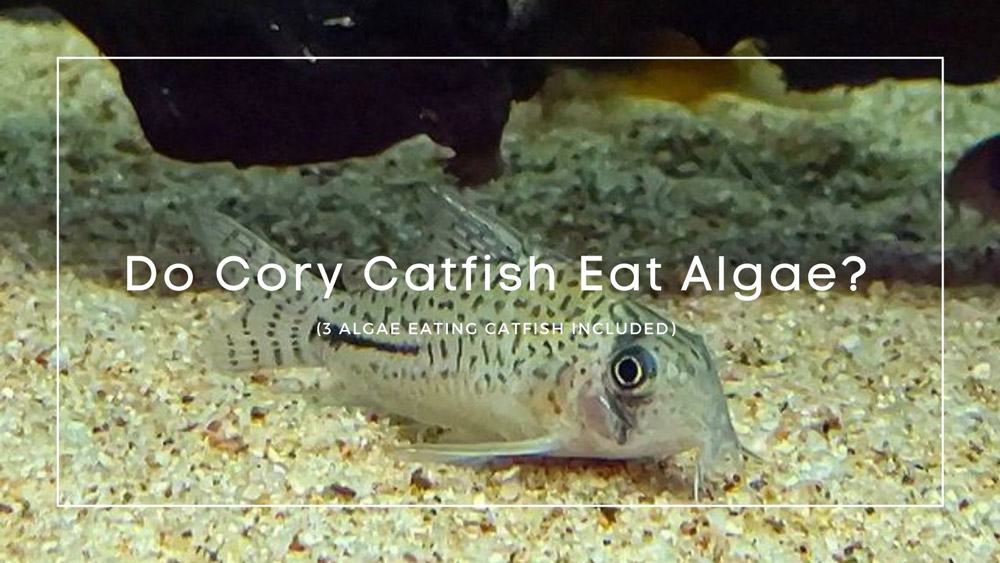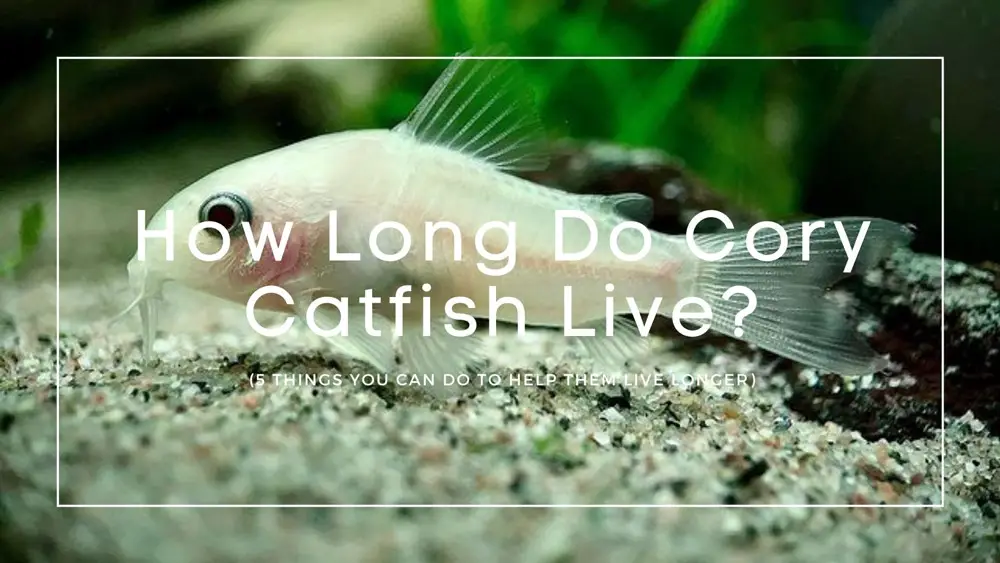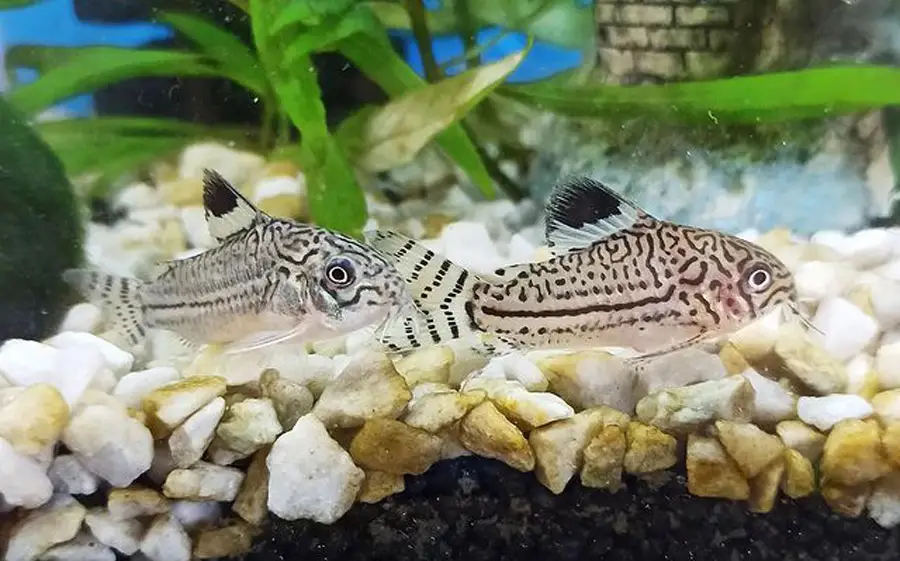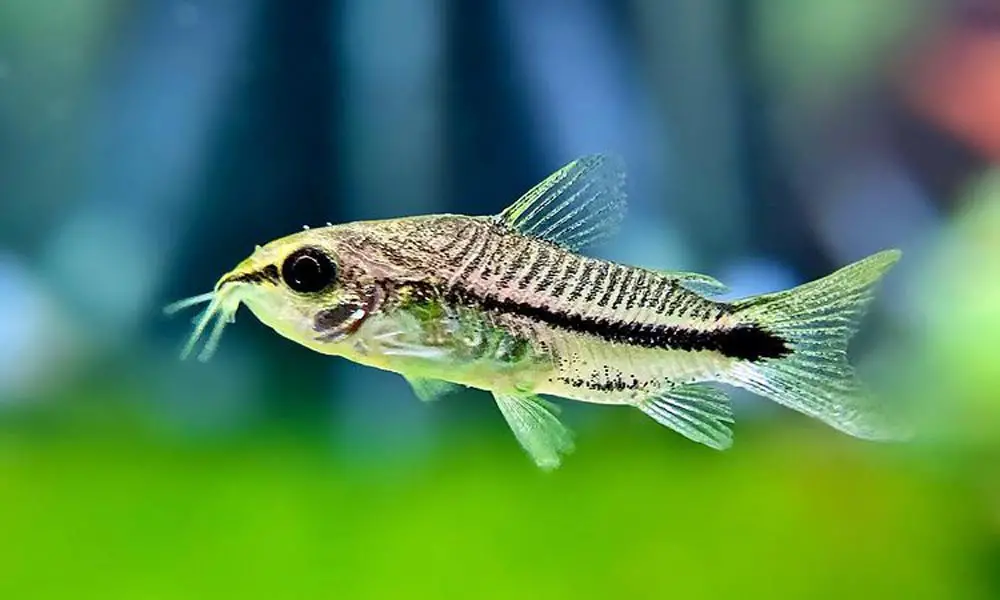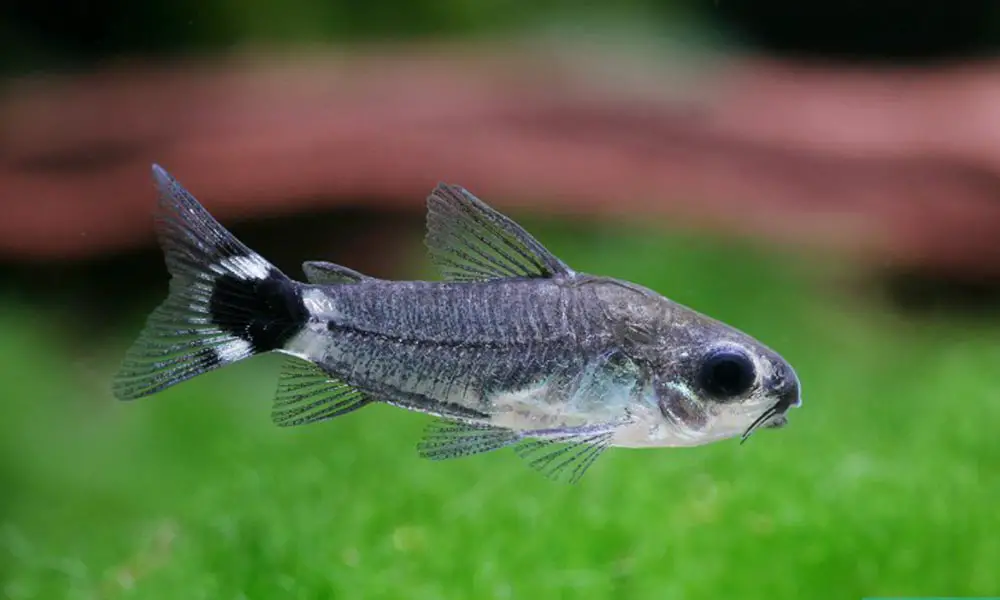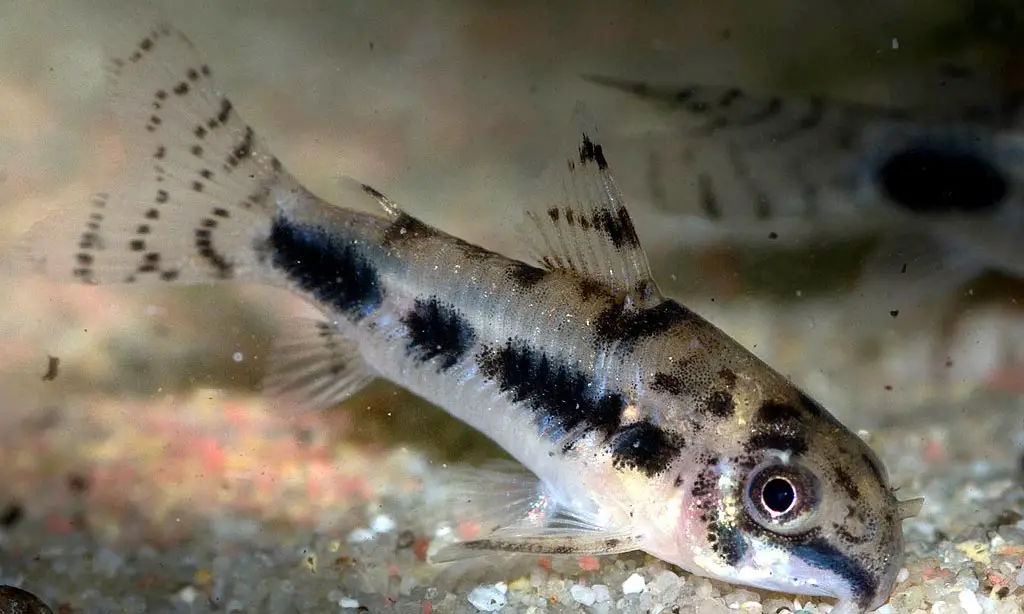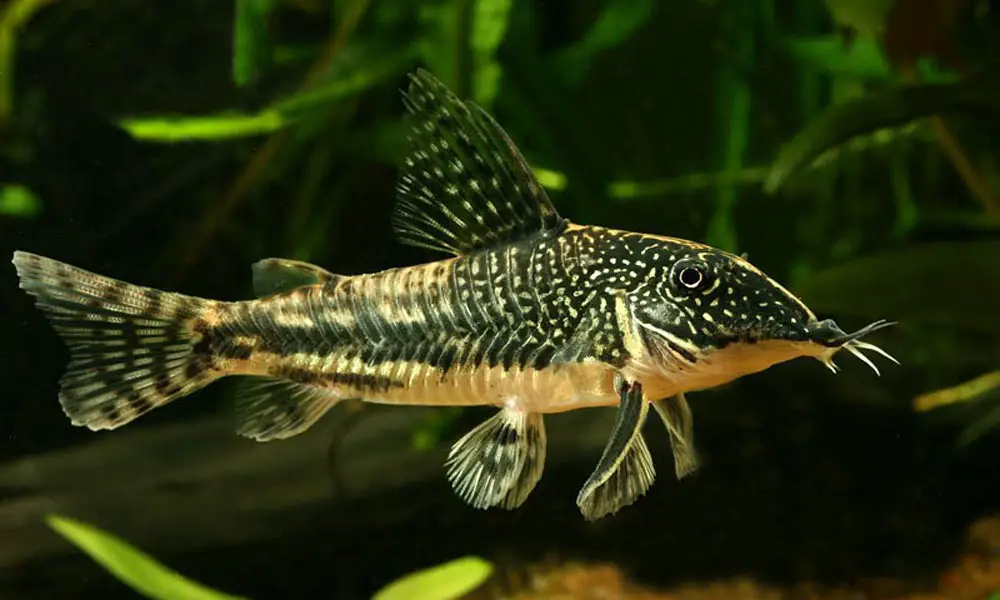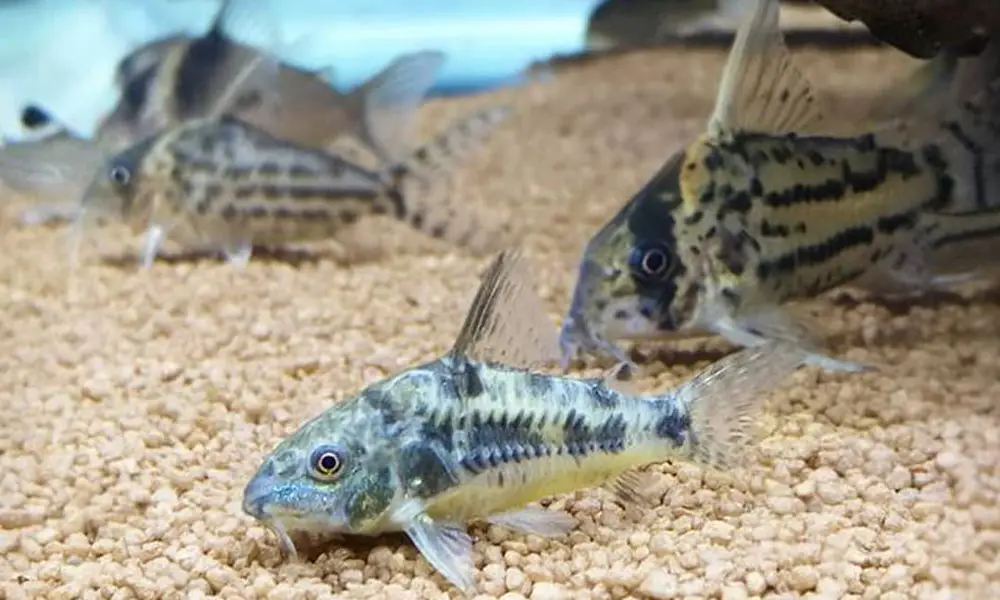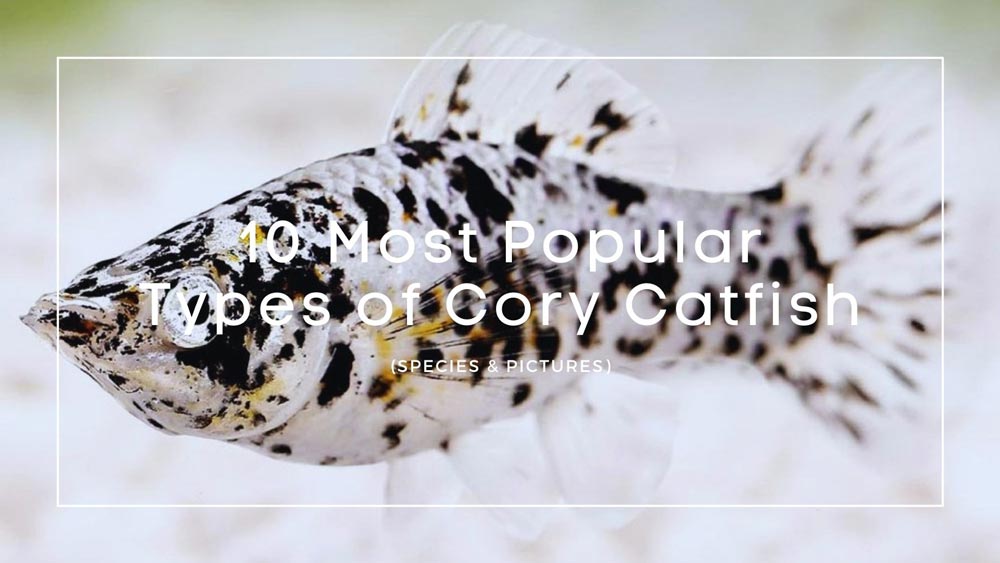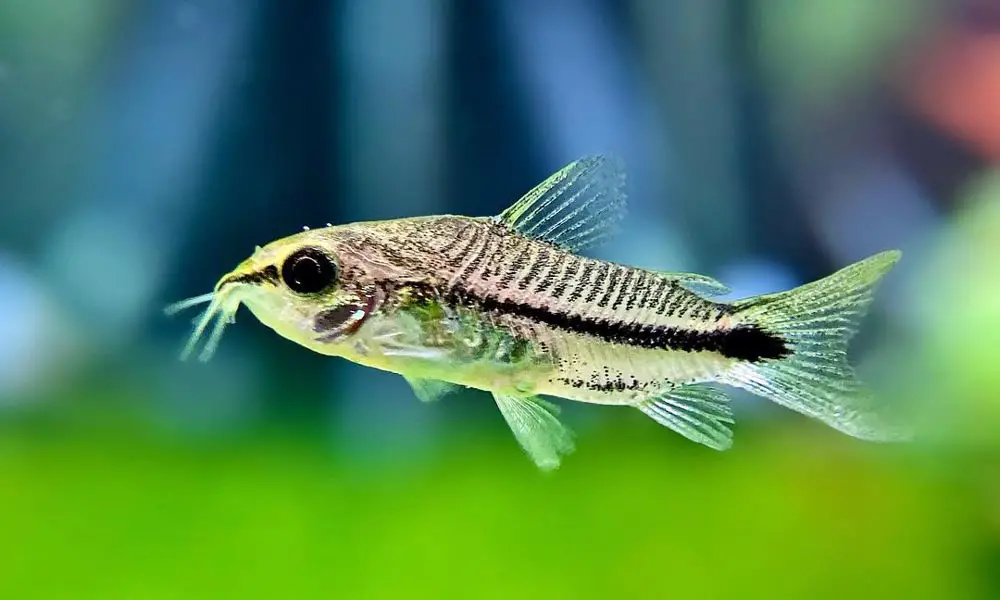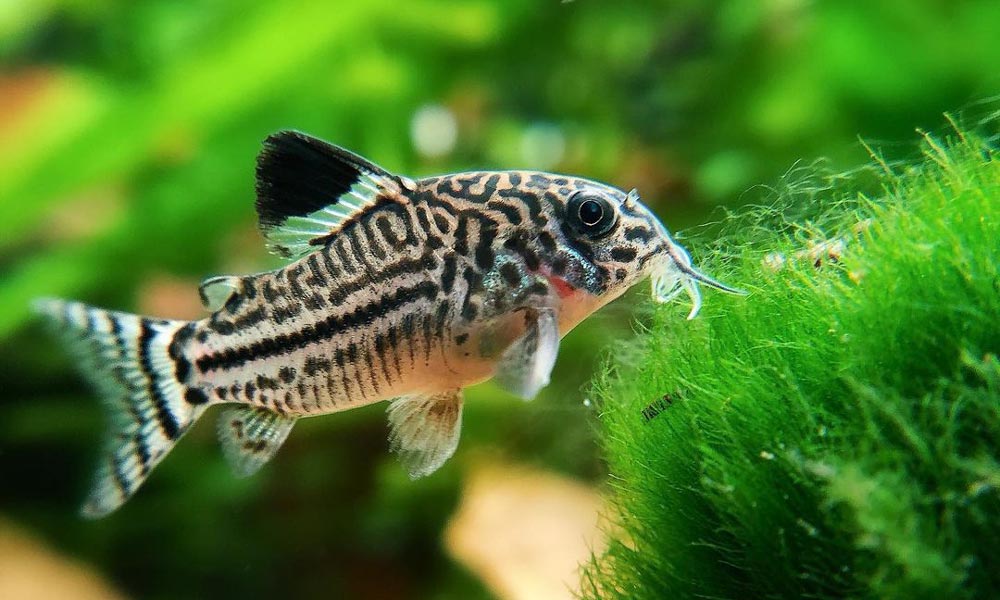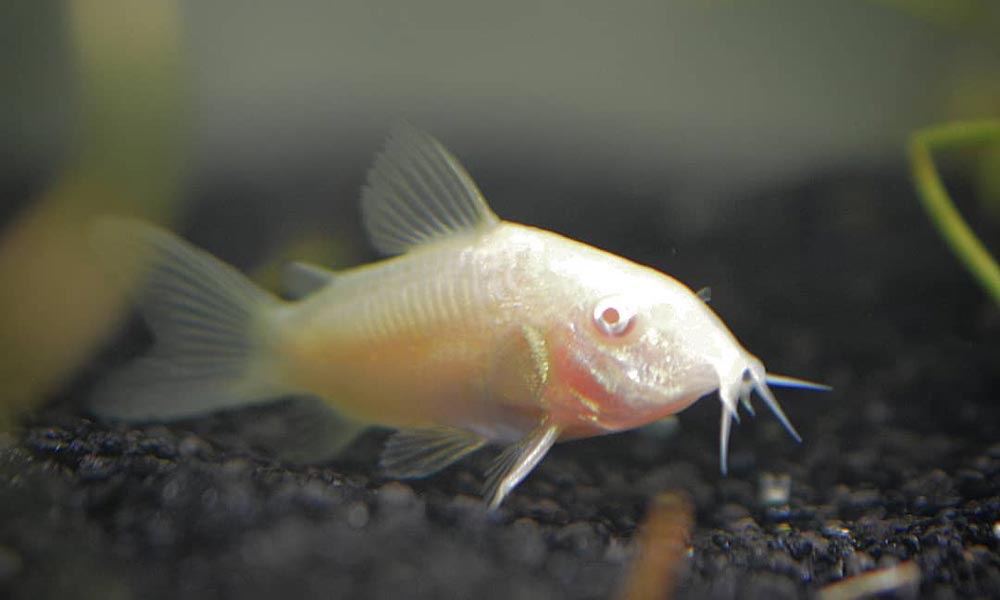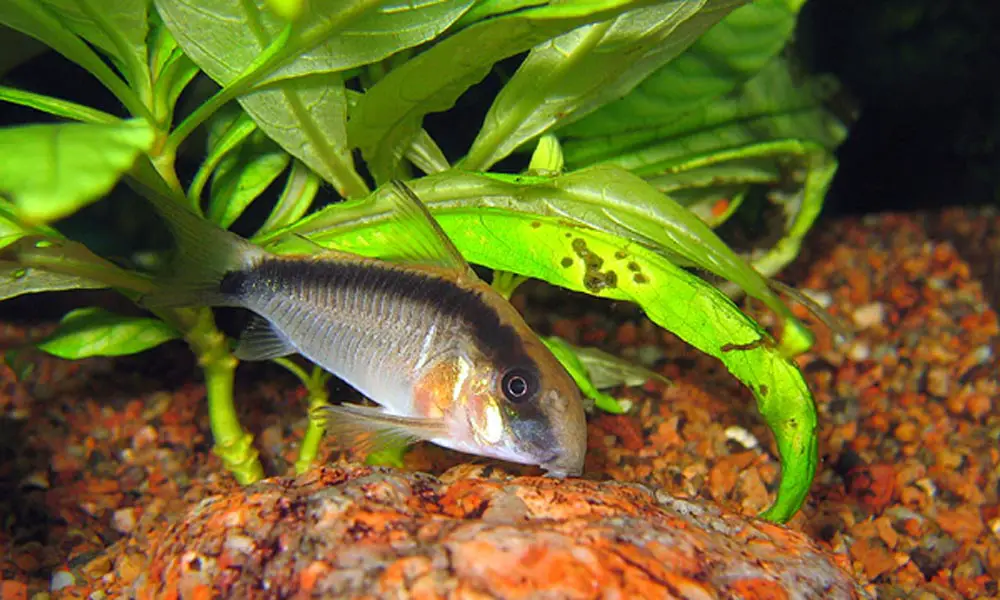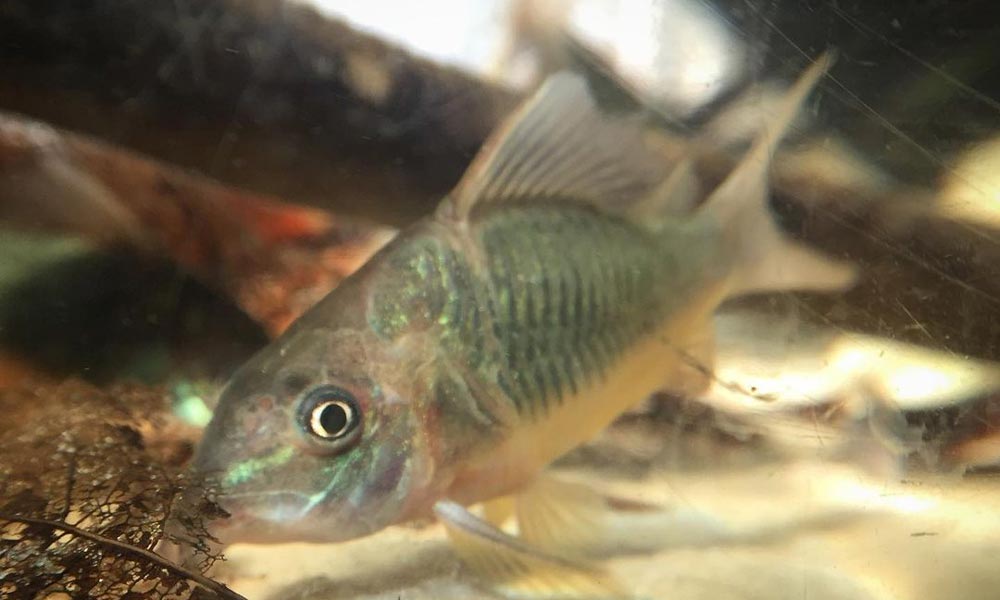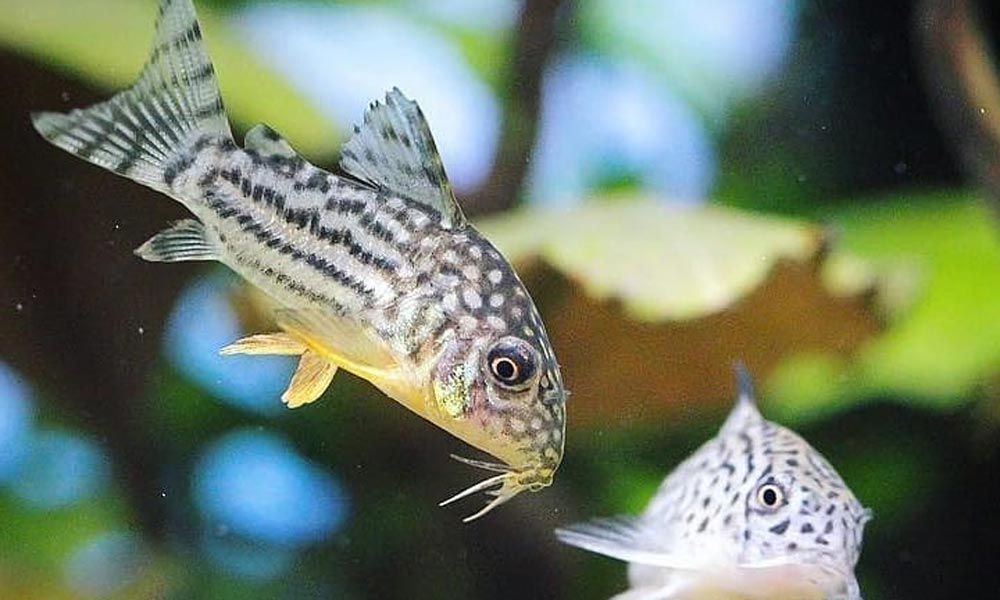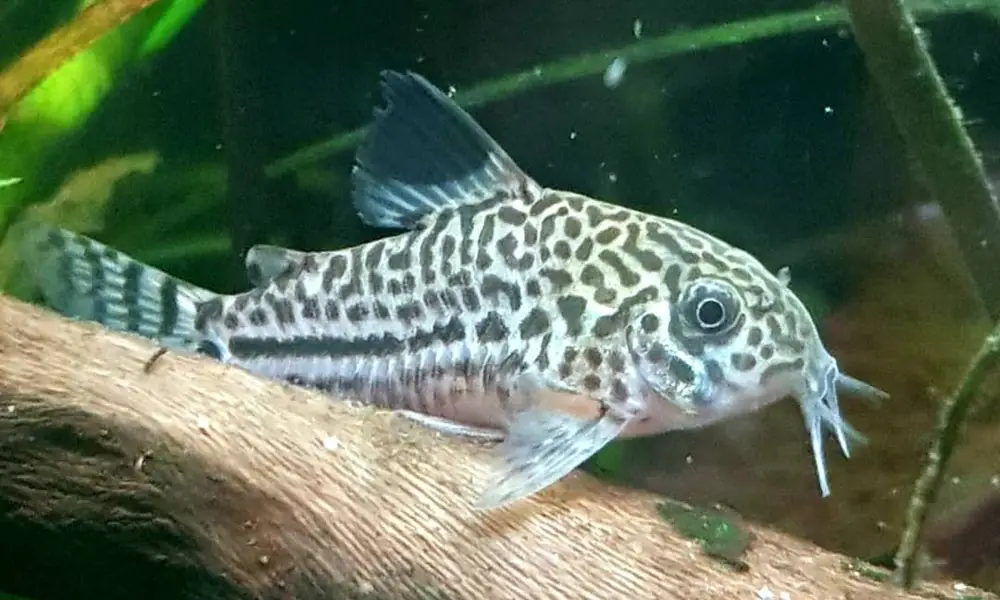Looking for a peaceful, small fish with tons of personality? Look no further! The peppered cory catfish, or Corydoras paleatus, is one of our most recommended community fishes for aquarists of all experience levels.
Here’s why:
They’re super friendly, easy to breed and make excellent clean-up crew members in community tanks.
In this care guide, you’ll learn everything you need to know about this adorable bottom dweller. Species profile, tank size, diet, tank mates, and more FUN facts. It’s all here!
Species Profile
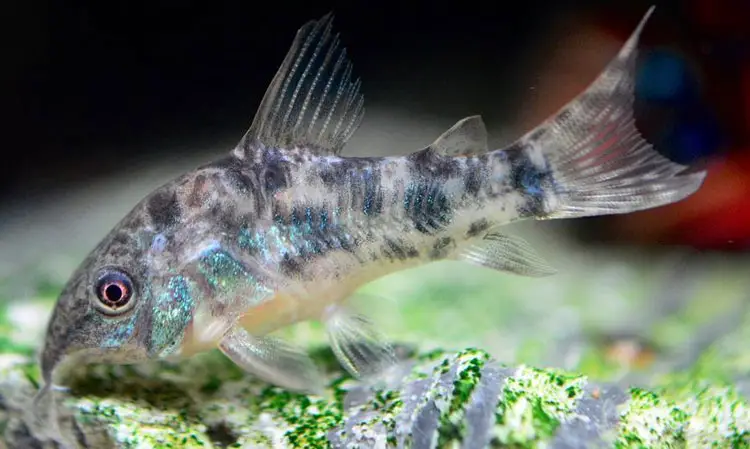
The peppered cory catfish (scientific name: Corydoras paleatus), also known as Blue leopard corydoras, peppered catfish, or mottled corydoras, are naturally found in the Amazon basin in South America.
The majority of this species can be found in the La Plata River in southeast Brazil and the lower Paraná River basin and coastal rivers in Uruguay and Brazil. [1] However, wild-caught specimens almost never get imported; most fish in the aquarium trade are bred in captivity.
As you may know, the Corydoras genus currently has 161 recognized species [2]. The C. paleatus remains the most well-known fish among those who maintain biodiverse community tanks ranging from 20 to 55 gallons.
| Scientific Name: | Callichthys paleatus, Corydoras maculatus, Corydoras marmoratus, Corydoras microcephalus |
| Common Name: | Peppered cory catfish, Peppered Cory, Peppered Catfish, Blue Leopard Corydoras, Mottled Corydoras, Paleatus Cory, Peppered Cat, Pepper Cory, and Salt and Pepper Cory. |
| Care Level: | Beginner |
| Origin: | South America |
| Lifespan: | 5– 10 years |
| Max Size: | 2.3 inches (5.9 cm) |
| Tank Level: | Bottom dweller |
| Temperature: | 72°F to 78°F (22°C to 26°C) |
| PH: | 6.0 to 7.0 |
| Water hardness: | 4 to 18 dKH |
| Diet: | Omnivorous |
| Minimum Tank Size: | 15 gallons |
| Temperament: | Peaceful |
Peppered Cory Lifespan
Believe it or not, the lifespan of peppered corys is usually 5-10 years in captivity, like other corys. While some sources report a lifespan of up to 15 years, that number highly depends on the quality of care they receive.
As with other captive-bred species, always buy from a reputable dealer to ensure you get a group of healthy fish.
Colors, Patterns & Identification
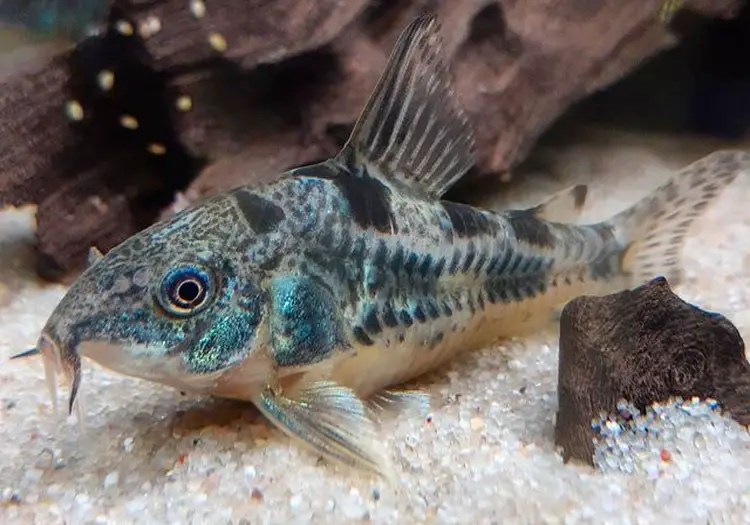
Peppered corys are aptly named after the high contrast pattern of dark and light spots that covers their bodies. The armor-like bony plates that run along its body act as a shield from predators, and the flat underside allows for quick movement in the water- both of which have allowed these stocky fish to adapt well to living at the bottom of rivers and streams.
They have rounded heads that are also covered with bony plates and an underturned mouth that they use to scavenge the substrate for food. You will notice two pairs of barbels on the jaw can help them “feel” around for food as they through the substrate.
Pay attention to the sharp rays on their fins. They usually offer protection, but you may have difficulty trying to catch this small catfish in a net.
In addition, peppered corys are shipped in packs of multiple fish like the other members of its family. One thing to be mindful of is that these sharp spines could harm the eyes of other fish during shipping. To avoid any issues later on, check for damage around the eyes as soon as they arrive.
Peppered corys come in two colors – the normal colored type, which has a pale olive to tan base color with dark markings, and the rare albino or gold morph, mostly white or light yellowish.
The colors and patterns of wild-caught fish vary depending on where they come from, but they generally have a more defined iridescent pattern. Of course, as previously mentioned, they are not commonly seen in the hobby.
Albino peppered corys are similar to other albino Corydoras species, but they have a small pink patch on the back near their dorsal fin.
A lesser-known fact about peppered cory catfish is that they can make sounds [3]. They do this by abducting their pectoral fins. Male fish use this sound during courtship and communication, while both sexes and juveniles use it when stressed.
Peppered Cory Catfish Size
The average peppered cory catfish size is roughly 2.3 inches (5.9 cm) in length when fully grown. These are small fish, which is one reason they make an excellent starter species for those wanting to try their first corys.
Behavior & Temperament
First, like other corys, C. paleatus need to be able to get close to the surface of the water so they can gulp some air every few minutes [4]. Therefore, there is no need to worry if you see them dart to the surface of your aquarium – this is completely normal behavior. But a lip or hood is necessary to prevent skittish jumpers.
As a relatively small, peaceful fish, they feel safe in numbers, so it is best to keep Corydoras paleatus in groups of at least six individuals. They are very shy and stressed when kept alone.
These fish are universally loved for an interesting behavior- they can wink at their owners; Sometimes, they roll their eyes back around without moving their head to look for predators or food, which can seem like winking or blinking. This gives them a lot of personalities.
Peppered Cory Care
Peppered corys are rather hardy that anyone can handle. You just have to know what they need to thrive.
In their natural habitat, these dwelling scavengers generally live in slow-moving, shallow rivers and tributaries or still pools and small lakes.
Size Tank
Though some enthusiasts have had success keeping these fish in tanks as small as 15 gallons, we recommend going with a 20-gallon aquarium or larger.
Peppered corys are social fish that prefer to live in groups, so a slightly larger aquarium serves better.
Water Parameters
An Amazon River biotope is the best environment for Corydoras paleatus. Since captive bred fish are going to be more adaptable, they can do well in various aquarium setups.
As long as you stay within the following parameters, they will flourish.
- Water temperature: 72°F to 78°F (22°C to 26°C)
- pH levels: 6.0 to 7.0
- Water hardness: 4 to 18 dKH
- Ammonia: 0 ppm
- Nitrite: 0 ppm
- Nitrate: <30 ppm
Substrate, Plants, and Lighting
As bottom dwellers, these little fish spend most of their time tirelessly digging through the substrate for food. A soft sand or fine, smooth gravel substrate is easier and safer on their barbs; something dark is preferable.
The rivers these fish come from often have tons of live plants. To mimic their natural habitat, the aquarium should be planted with plenty of vegetation, including floating plants that cover only part of the water and submerged plants that provide shady areas. Remember, they need to breathe air.
A big advantage of floating plants is that they dim the light, even though this species prefers more lighting than their Corydoras cousins.
Driftwoods are appreciated as they provide hiding places.
Food & Diet
In the wild, pepper corys feed on worms, crustaceans, insects, and plant matter.
In the trade, they are often marketed as cleaner fish, as they are known to consume leftover food and detritus that falls on the substrate. Many novice fish owners think that’s all they eat. But this is not the case, and they do need a varied diet.
To keep your Corydoras paleatus healthy and thriving, we recommend giving them a high-quality sinking pellet, algae wafers, or tablet food. You are welcome to feed them with suitably sized live, frozen foods such as bloodworms and daphnia.
Additionally, supplement their diet with periodic vegetables: most corys relish cucumber, blanched zucchini, and spinach.
Watching your fish during feedings, especially in a community tank, ensures that each one gets a fair share of the food. Feed them one or two feedings per day. These corys are not totally nocturnal, but it is best to feed them before dusk when they are most active.
Peppered Cory Catfish Tank Mates
Peppered corys are a shoaling species; they should be kept in schools of a half dozen or more. These fish do well in medium to large community tanks as long as their tank mates are not aggressive and also small fish.
Some ideal tank mates include:
- Small peaceful barbs
- Danios
- Guppies
- Mollies
- Platies
- Swordtails
- Killifish
- Honey gourami
- Dwarf cichlids
Given their optimal water temperatures (72°F to 78°F), avoid fish that require the high end of the temperature spectrum.
Male Vs. Females
Young Corydoras paleatus of both sexes look relatively the same, but as they reach adulthood, females tend to be larger and develop plumper bellies. When looked at from above, it’s easy to spot the difference; females are much wider than males.
Another giveaway is that males often have a longer dorsal fin, and their anal fins are more pointed. Additionally, males appear to be more colorful than females.
Corydoras paleatus Breeding
Peppered corys breed freely in captivity, often with mature pairs – one female and two males. To increase the likelihood of spawning, opt for a higher male-to-female ratio.
Once the females grow to an average size of 2.2 inches (5.6cm) and males reach 1.9 inches (4.9 cm), they become sexually mature adults and begin to show their courtship ritual.
If you want to induce spawning, do a large water change with cooler water.
What happens when the pair mate? They often exhibit a shivering ‘T position’ mating dance for about 30 seconds while the male fertilizes 2-4 eggs between the female’s pelvic fins.
The pair repeats this process until the female lays all her eggs, usually between 200 to 300, on the aquarium furniture, plants, or glass. To get a higher success rate, the parents should be moved to another aquarium at this point.
These eggs are nearly 2 mm in diameter and generally take 4-6 days to hatch, depending on water temperature. Corydoras paleatus fry are extremely small, so they need to be fed cyclops or other very tiny foods for the first few days.
As they grow, you can wean them onto newly hatched brine shrimp or other live foods before switching to a diet of commercial fry flake foods. Meanwhile, performing frequent water changes helps to keep the fry healthy and growing quickly.
Wrapping Up
The peppered cory catfish is a beautiful, peaceful creature that can make an excellent addition to any community freshwater aquarium. Plain and simple.
With a little bit of attention and care, you can help these beautiful fish thrive.
If you like the peppered cory and have any questions about this fish, we’re always happy to help!
Article Sources:
- Corydoras paleatus (Peppered corydoras): FishBase
- Corydoras: Wikipedia
- Sound production and reproductive behaviour of the armoured catfish Corydoras paleatus: Springer
- Gill morphology and morphometry of the facultative air-breathing armoured catfish, Corydoras paleatus: Wiley
- Peppered Cory (Corydoras paleatus): PlanetCatfish
